August 29, 2016, by Kathryn Steenson
Happy birthday KMC!
Happy 10th birthday to us! Ten years ago today, the Reading Room at The University of Nottingham’s then-newest campus at King’s Meadow welcomed its first visitors.
The Basement
Since 1973, Manuscripts & Special Collections had been based in the lower level of Hallward Library on University Park Campus. The lack of space had been a growing problem for a number of years. MSC had reached full capacity and was struggling to find space for new material, had difficulty in hosting groups of students for classes, and had almost no ability to develop digital access, which at the time was still a new and innovative area.
At the same time, pressure on the rest of Hallward Library had grown. As student numbers increased, and so did their need for study space and more computer access.
Preparation
It took almost a year to plan and prepare the collections for moving, and to fully convert the former Carlton TV Studios into suitable accommodation for archives and rare books. Due to the nature of some of the records here, especially the manorial and hospital records, the storage needed to meet the strict environmental and security requirements. The new Store was also designed with 25 years expansion room planned.
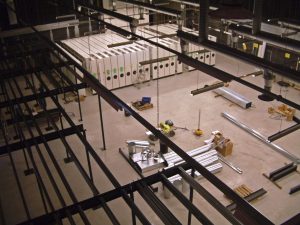
Aerial photo of the specialist rolling shelving is installed in the former TV Studio turned archives store.
The increased space also meant there was room for a specialist Conservation Lab and a Digitisation Studio to be built, as well as rooms to isolate new accessions requiring conservation work, and an area to sort and process them. These areas are not publicly accessible but are vital to getting the collections properly catalogued and ready to make available in the Reading Room.
The Reading Room itself was divided into two areas, one for the library reference stock and one dedicated to using archives and rare books. The room was arranged with large tables to give readers plenty of space for unfurling maps and deeds or open oversized volumes.
Staff and volunteers spent weeks carefully wrapping and packaging all 3 million manuscripts and 40,000 rare books. Once packed, material couldn’t be issued to readers, so from April there was a staggered closure to minimise the length of time the holdings were unavailable.
The Move
The old Reading Room was finally completely closed on 5 June, and the specialist removal company’s task of moving 10,000 crates began the following day.
Despite the inauspicious date (6/6/06), the move went well and a total of 75 trips were made over the course of six weeks. By August, attention was turned to installing the final pieces of conservation and reprographics equipment. Staff had moved into the new offices and were checking the locations of all the books and manuscripts in the Store, ready for the re-opening on 29 August 2006.
Ten Years On
In the first 12 months after opening, we were visited by 835 readers. We’ve since nearly doubled that, with 1515 visitors in 2014/15. We have a dedicated teaching room for classes, seminars and external group visits. Our holdings have grown by half a million manuscripts and 15,000 published items. The Conservation facilities have allowed us to undertake major work on our medieval books and Archdeaconry Court records. As well as providing a copying service to enquirers and support for our exhibitions, the Digitisation Studio will soon be providing a digitisation service to other heritage institutions, and is instrumental in preserving our born-digital collections.
We are celebrating our 10th anniversary here on Friday 9th September with exclusive behind-the-scenes tours, tea party and giveaways. If you would like to join us, please RSVP to mss-library@nottingham.ac.uk
No comments yet, fill out a comment to be the first

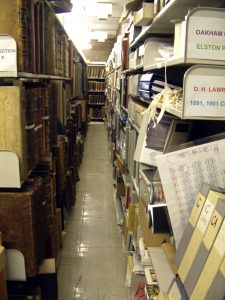

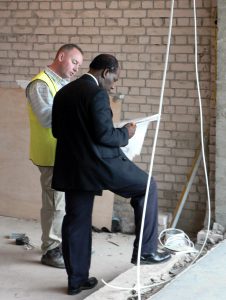
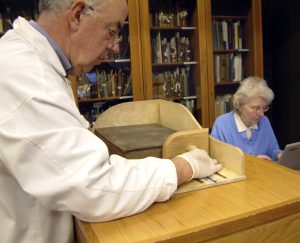
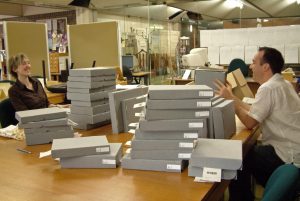
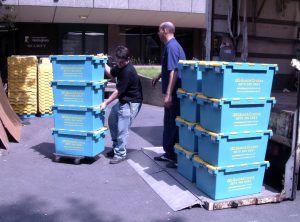
Leave a Reply